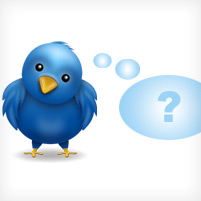Who Gives a Tweet

Twitter users say only a little more than a third of the tweets they receive are worthwhile. Other tweets are either so-so or, in one out of four cases, not worth reading at all.
This is according to a recent new study by researchers at Carnegie Mellon University, MIT and Georgia Tech.
"If we understood what is worth reading and why, we might design better tools for presenting and filtering content, as well as help people understand the expectations of other users," said Paul André, a post-doctoral fellow in Carnegie Mellon's Human-Computer Interaction Institute (HCII) and lead author of the study.
Twitter users choose the microblogs they follow, but that doesn't mean they always like what they get.
Twitter says more than 200 million tweets are sent each day, yet most users get little feedback about the messages they send besides occasional retweets, or when followers opt to stop following them.
André and his colleagues — Michael Bernstein and Kurt Luther, doctoral students at MIT and Georgia Tech, respectively — created the website "Who Gives a Tweet?" to collect reader evaluations of tweets. They will present their findings Feb. 13 at the Association for Computing Machinery's Conference on Computer Supported Cooperative Work in Seattle, Wash.
People who visited "Who Gives a Tweet?" were promised feedback on their tweets if they agreed to anonymously rate tweets by Twitter users they already follow. Over a period of 19 days in late 2010 and early 2011, 1,443 visitors to the site rated 43,738 tweets from the accounts of 21,014 Twitter users they followed.
Overall, the readers liked just 36 percent of the tweets and disliked 25 percent. Another 39 percent elicited no strong opinion.
"A well-received tweet is not all that common," Bernstein said. "A significant amount of content is considered not worth reading, for a variety of reasons."
Despite the social nature of Twitter, tweets that were part of someone else's conversation, or updates around current mood or activity were the most strongly disliked.
On the other hand, tweets that included questions to followers, information sharing, and self-promotion (such as links to content the writer had created) were more often liked.
"Our research is just a first step at understanding value on Twitter," Luther said. "Other groups within Twitter may value different types of tweets for entirely different reasons."
Nevertheless, the analysis confirms some conventional wisdom and suggests nine lessons for improving tweet content:
- Old news is no news: Twitter emphasizes real-time information. Followers quickly get bored of even relatively fresh links seen multiple times.
- Contribute to the story: Add an opinion, a pertinent fact or add to the conversation before hitting "send" on a link or a retweet.
- Keep it short: Followers appreciate conciseness. Using as few characters as possible also leaves room for longer, more satisfying comments on retweets.
- Limit Twitter-specific syntax: Overuse of #hashtags, @mentions and abbreviations makes tweets hard to read. But some syntax is helpful; if posing a question, adding a hashtag helps everyone follow along.
- Keep it to yourself: The cliched "sandwich" tweets about pedestrian, personal details were largely disliked. Reviewers reserved a special hatred for Foursquare location check-ins.
- Provide context: Tweets that are too short leave readers unable to understand their meaning. Simply linking to a blog or photo, without giving a reason to click on it, was "lame."
- Don't whine: Negative sentiments and complaints were disliked.
- Be a tease: News or professional organizations that want readers to click on their links need to hook them, not give away all of the news in the tweet itself.
- For public figures: People often follow you to read professional insights and can be put off by personal gossip or everyday details.
André said it may be possible to develop applications that can learn a user's preferences and filter out unwanted content.
Or apps might display some information differently; location check-ins are unpopular tweets, but might be valued if plotted on maps.
But it's also possible that users are willing to tolerate unwanted content, he added. Some people may follow others out of social obligation. Others may dislike certain types of tweets, but value them in the aggregate as helping them keep track of people or issues.
"Social media technologies such as Twitter pose questions regarding privacy, etiquette and tensions between sharing and self-presentation, as well as content," André said.
"Continued exploration of these areas is needed for us to improve the online experience."
Related Links: Read the press release | HCII | SCS | "Who Gives a Tweet?" website
